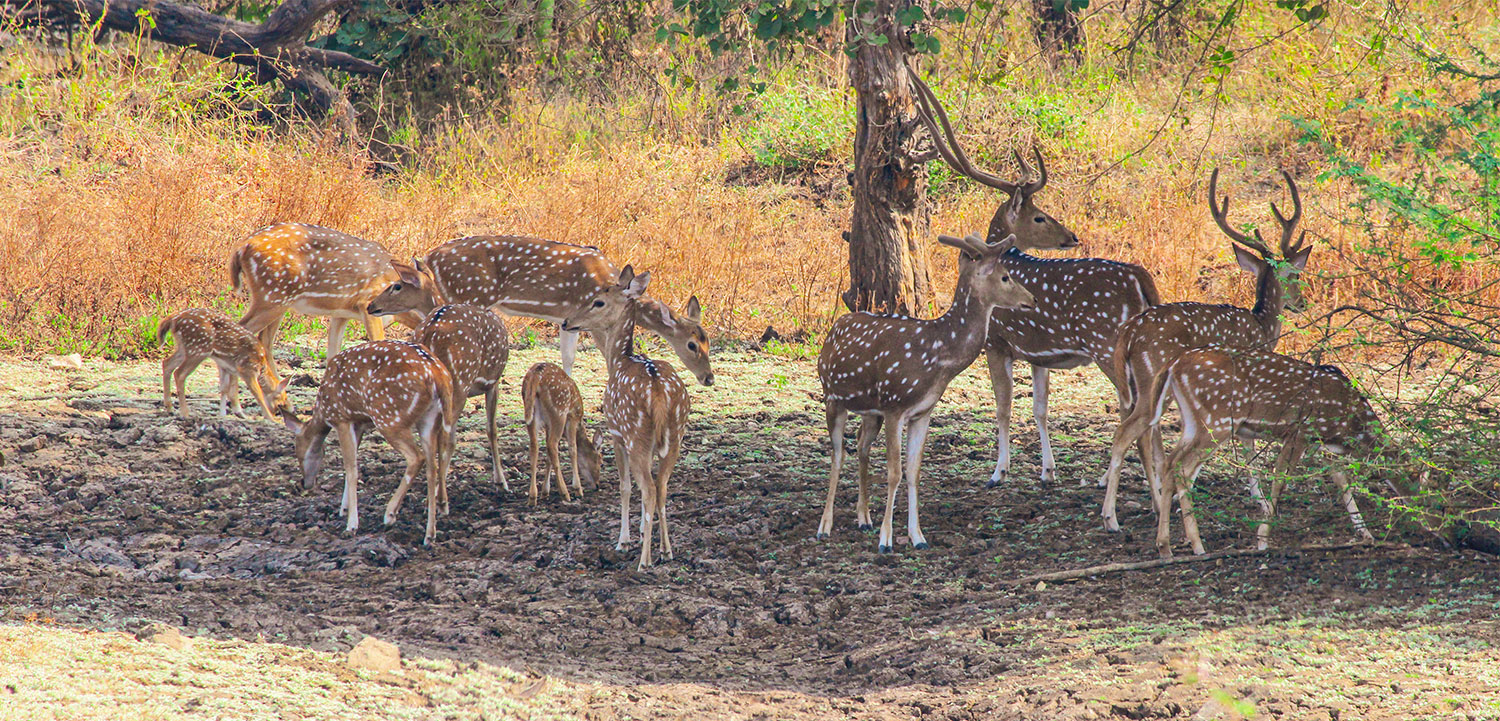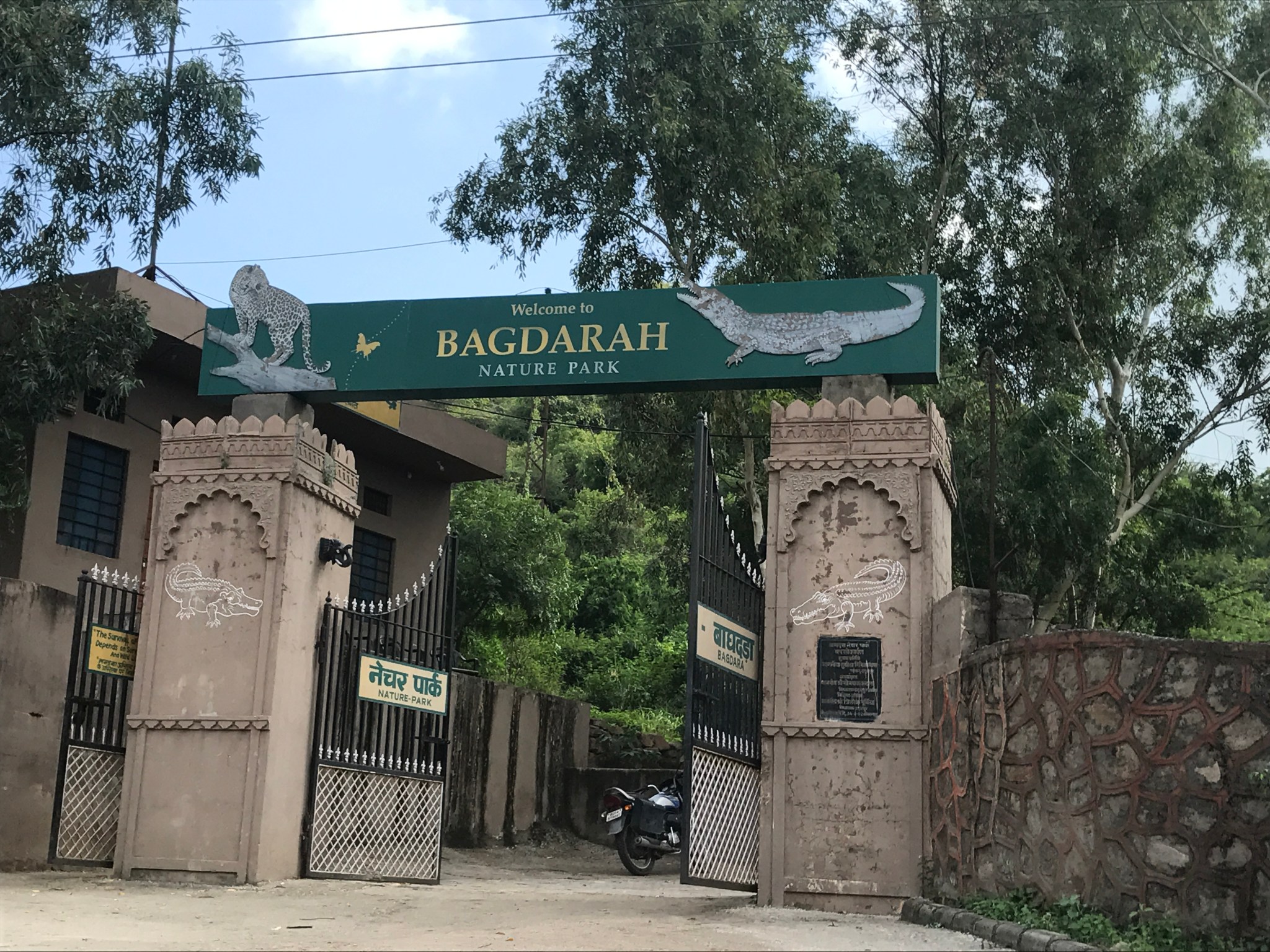The serene landscapes of Banswara, Rajasthan, are not only known for their lush greenery, water bodies, and tribal culture but also for their proximity to some of the most enchanting wildlife sanctuaries.
These natural havens serve as a refuge for a variety of flora and fauna, offering an incredible opportunity for nature enthusiasts and wildlife lovers to explore the raw beauty of the region.
This article delves into the wildlife sanctuaries near Banswara, highlighting their unique ecosystems, biodiversity, and why they are a must-visit for those seeking solace in nature.
1. Sita Mata Wildlife Sanctuary
Overview
Located about 100 km from Banswara, Sita Mata Wildlife Sanctuary is a treasure trove of biodiversity. Spread across 422 sq. km, it is a dense forest area where three different ecosystems converge—dry deciduous forests, grasslands, and wetlands.
Flora and Fauna
Flora: The sanctuary is rich in teak, bamboo, and khair trees. Seasonal flowers add a vibrant touch to the forest during spring.
Fauna: Home to leopards, hyenas, jackals, flying squirrels, and the elusive caracal. The sanctuary also hosts migratory birds, making it a paradise for birdwatchers.
Unique Features
The flying squirrel is a rare attraction. Visitors can witness this nocturnal creature gliding between trees during dawn or dusk.
Mythologically significant, the sanctuary is named after Sita from the Ramayana, as it is believed to be the place where she spent her exile.
2. Kaleshwar Wildlife Sanctuary
Overview
Kaleshwar Wildlife Sanctuary, located approximately 80 km from Banswara, is a lesser-known but serene wildlife spot. The sanctuary is a blend of dense forests and open grasslands, making it an ideal habitat for various species.
Flora and Fauna
Flora: The sanctuary is adorned with neem, sal, and other indigenous trees.
Fauna: Leopards, sloth bears, and wild boars are commonly sighted here. Reptiles like monitor lizards and snakes add to its biodiversity.
Highlights
The sanctuary’s Kaleshwar Mahadev Temple, located deep within the forest, attracts both pilgrims and nature enthusiasts.
It is a peaceful retreat for those looking to escape bustling city life.
3. Phulwari Ki Nal Wildlife Sanctuary
Overview
Situated about 60 km from Banswara, Phulwari Ki Nal Wildlife Sanctuary is a hidden gem. Covering a modest area of 511 sq. km, it is an ecologically significant region that protects tribal land and biodiversity.
Flora and Fauna
Flora: The sanctuary boasts a wide range of medicinal plants and dense vegetation.
Fauna: It is home to pangolins, four-horned antelopes (chowsingha), and civets. A variety of snakes and birds also inhabit the area.
Why Visit?
Its relatively untouched environment offers an authentic experience for wildlife enthusiasts.
The sanctuary is a hotspot for researchers studying the unique ecosystem and tribal way of life.
4. Jaisamand Wildlife Sanctuary
Overview
Located about 120 km from Banswara, Jaisamand Wildlife Sanctuary surrounds the famous Jaisamand Lake, one of the largest artificial lakes in Asia. The sanctuary spans around 52 sq. km and is a perfect blend of aquatic and terrestrial ecosystems.
Flora and Fauna
Flora: The sanctuary has lush greenery with trees like dhok and khair.
Fauna: Crocodiles in the lake are a major attraction. Other animals include panthers, deer, and various bird species like parakeets and kingfishers.
Highlights
The lake and its surrounding area provide excellent opportunities for boating and bird watching.
Jaisamand Island Resort within the lake offers a luxurious retreat for visitors.
5. Vansda National Park
Overview
Although slightly farther (about 150 km from Banswara), Vansda National Park in Gujarat is worth mentioning for its rich biodiversity and well-preserved ecosystems.
Flora and Fauna
Flora: The park features tropical moist deciduous forests with dense canopies.
Fauna: Leopards, python, jungle cats, and an array of birds like hornbills and woodpeckers can be found here.
Highlights
Its proximity to the Western Ghats enhances its biodiversity.
Nature trails and safari options make it a popular spot for adventure seekers.
6. Baghdara Nature Park
Overview
Baghdara Nature Park, located within Banswara itself, is a perfect spot for local exploration. It serves as a recreational space and a mini wildlife reserve.
Attractions
A small lake within the park offers boating options.
It is a great place for family outings and spotting local wildlife like deer and peacocks.
Tips for Visiting Wildlife Sanctuaries
Best Time to Visit: The ideal time is between October and March when the weather is pleasant and wildlife sightings are more frequent.
Permits: Always check for entry permits and timings before planning your visit.
Guided Tours: Opt for local guides to enhance your experience and understanding of the sanctuary.
Eco-Friendly Practices: Avoid littering, respect the natural habitat, and maintain silence to avoid disturbing wildlife.
The Role of Wildlife Sanctuaries in Conservation
These sanctuaries are crucial in preserving the delicate balance of ecosystems. They protect endangered species, act as carbon sinks, and provide livelihoods for local communities through eco-tourism.
Organisations like Prakriti Kalyan Foundation work tirelessly to support conservation efforts in and around Banswara. Their initiatives focus on raising awareness about environmental sustainability and protecting natural habitats.
Conclusion
The wildlife sanctuaries near Banswara offer an unforgettable experience for anyone passionate about nature and biodiversity. From the dense forests of Sita Mata to the tranquil waters of Jaisamand, these sanctuaries provide a glimpse into Rajasthan’s rich natural heritage.
A visit to these sanctuaries not only rejuvenates the soul but also underscores the importance of conserving these pristine habitats for future generations. Whether you’re a wildlife photographer, a birdwatcher, or simply a traveller seeking peace in nature, Banswara’s wildlife sanctuaries promise a haven of beauty and serenity.

.png)





.png)
.png)


.png)
.png)
.png)
.png)

0 Comments